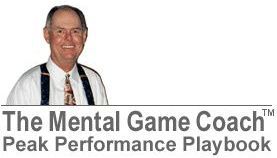You're a leader in your organization. When you have great ideas for the business, but no one is buying into them, do you know why not? Do you know how to handle the inevitable resistance that comes from the change process in an organization? This article helps you manage organizational change through your own mental toughness, employee attitudes and the bell-shaped curve. 633 words.
Managing Change In Your Business
The Attitude Bell Curve And Mental Toughness As Business Tools
Bill Cole, MS, MA
Founder and CEO
William B. Cole Consultants
Silicon Valley, California
You have a brilliant idea for your company that will increase revenue and create more profits. There's only one problem. The employees who have to implement the idea aren't buying into your vision, so it isn't going anywhere. How can you get them to change their opinion and embrace your great idea?
Selective Focus Begins the Change
The key to change management is to ignore both the supportive 15% (they don't need convincing) and resistant 15% (they can't be convinced) and concentrate on the neutral 70%. If the broad middle of the population moves to the right on the attitude bell curve, change happens. That segment will move to the right if it sees that you are committed to the change and are no longer allowing the resisters to thwart you.
What happens when the resisters see everyone else moving away from their position? For some, the isolation becomes too uncomfortable and they join the majority of the employees in implementing the changes. For others, the realization that they have lost their power causes them to leave, making both them and the company better off.
Mental Toughness: the Key to Bell Curve Management
Why isn't this simple strategy used more often? It often comes down to the need for mental toughness from the senior leadership in the organization. Mental toughness is being able to maintain your interior focus, relaxation, determination and confidence in the face of extreme external stressors that should, by all rights, make you fail. It's performing at your peak under pressure.
These three tenets are at the crux of mental toughness:
- Exerting your focus where the impact is greatest.
- Attempting to influence only the things over which you have full or limited control.
- Letting go of the things you can't control.
Our advice for the CEO, President, executive or business owner who wants to successfully manage a company-wide change initiative:
- Be mentally tough. Show determined leadership and persevere under the most stressful resistance. Demonstrate that, in your world, the change initiative is a done deal.
- Don't create more resistance than is naturally there by attempting to fight or control every aspect of your change initiative.
- Don't take the resistance personally. Realize that the laws of the corporate jungle are operating and you can't fight human nature.
- Handle the stress of the change process in admirable fashion, setting the standard for others to emulate.
Be a savvy business leader who understands how change "really" operates, at organizational-intrapersonal levels, and manage that change by leveraging your mental toughness as a business asset.
Read about our Mental Toughness for Business speaking program to learn how you can use a mental toughness toolkit that optimal performers apply to problems and troubling situations to help them persevere and win.
Bill Cole, MS, MA, a leading authority on peak performance, mental toughness and coaching, is founder and CEO of William B. Cole Consultants, a consulting firm that helps organizations and professionals achieve more success in business, life and sports. He is also the Founder and President of the International Mental Game Coaching Association (www.mentalgamecoaching.com), an organization dedicated to advancing the research, development, professionalism and growth of mental game coaching worldwide. He is a multiple Hall-Of-Fame honoree as an athlete, coach and school alumnus, an award-winning scholar-athlete, published book author and articles author, and has coached at the highest levels of major-league pro sports, big-time college athletics and corporate America. For a free, extensive article archive, or for questions and comments visit him at www.MentalGameCoach.com.
Free Re-Publishing Rights For This Article
You have our advance permission to republish this article, as long as you do not sell it. The author's name, web address (MentalGameCoach.com) and copyright notice (Copyright © Bill Cole, MS, MA) must appear in all reprinted articles. If the article appears on a website or in an e-zine, the article must include a link to a page in the MentalGameCoach website. We would also appreciate your including the author's bio and full contact information in your article, although this is not a requirement. For additional information, see our full article re-publishing permission guidelines.




